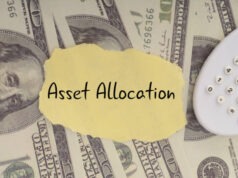
Macroeconomic indicators are integral in comprehending the economic growth and performance of a nation. These indicators offer a panoramic view of the economy’s health, encompassing its current standing and potential for future expansion. For instance, during the 2008 financial crisis, analyzing macroeconomic indicators enabled investors to make informed decisions and prevent substantial losses. By scrutinizing these metrics, individuals and organizations can make judicious decisions and avoid impulsive actions.
Just as having a solid grasp of macroeconomic indicators can help individuals and organizations make better-informed decisions in the realm of economics, just like understanding the rules of real money roulette, for instance, can significantly impact one’s chances of winning. CafeCasino’s user-friendly website and intuitive interface make it easy for newcomers to find the information they need to exercise responsible practices when gambling online – the very features that come in handy when engaging in high-pressure decision-making, as well as strategic thinking.
We’ll do something similar below, highlighting the use and importance of macroeconomic indicators to the economy. We’ll look at how these indicators affect businesses, individuals, and decision-makers as well as how they might aid in making wise choices. Upon completing this article, readers will have acquired a comprehensive understanding of the essence of macroeconomic indicators and their utility in delineating the economic environment.
Macroeconomic Indicators
Macroeconomic indicators provide a holistic evaluation of an economy’s vigor and performance, enabling decision-makers across various sectors to gain a plethora of perspectives on its condition.
Information for these variables is amassed from a plethora of sources, encompassing official statistics, surveys, and financial reports. By carefully examining macroeconomic indicators and knowing where to source information from the primary governmental or research think tank source, individuals and organizations can gain insight into the state of the economy, validate reported information, and identify patterns and trends.
These indicators also play a crucial role in the formulation of economic policies aimed at maintaining economic stability and promoting sustainable growth. For those who understand the implications of movements in these indicators, there is both an empowerment of being able to validate reported information and a stabilization related to conscious reaction rather than irrational exuberance.
Economic Evaluation and Policy-making
Macroeconomic indicators provide a comprehensive perspective on the current state of production, growth, inflation, employment. Governments and policymakers utilize these indicators to design and execute economic policies aimed at fostering sustainable growth and stabilizing the economy. These policies aim to address specific economic problems like hyperinflation, unemployment, or trade imbalances that may be devastating to a weak economy.
To predict market trends and make educated decisions regarding investment and output, firms and investors rely on macroeconomic data. By scrutinizing these indicators, investors can spot opportunities and evaluate the associated risks of different economic activities. Additionally, balance of payments and exchange rate indicators offer perceptions into international trade operations, helping organizations and governments assess the effects of trade on the economy and decide on trade policy.
In contrast, microeconomics concentrates on individuals and their economic decision-making. Macroeconomics studies general economic factors and their influence on the overall economy. Macroeconomic analysis broadly focuses on three crucial indicators: national output (measured by gross domestic product), unemployment, and inflation.
Macroeconomic Indicators in Times of Crisis
In periods of fiscal upheaval, macroeconomic indicators become increasingly indispensable as decision-makers endeavor to formulate policies and make informed decisions. In such circumstances, macroeconomic indicators assist in pinpointing the exact causes and magnitude of the crisis, evaluating the impact on the economy, and devising strategies to mitigate its effects.
Macroeconomic variables were crucial in establishing the extent and severity of the COVID-19 pandemic’s economic impact. For instance, the supply chain’s extraordinary disruption increased the cost of commodities, which raised inflation rates. The unexpected increase in unemployment rates, meantime, highlighted the urgency of taking prompt fiscal action.
Interestingly, macroeconomic indicators may be traced back to the 1930s Great Depression, when the US government sought to assess the state of the economy in the nation. As firms, investors, and governments negotiate the dynamic economic environment today, these indicators have evolved into a crucial tool.
Macroeconomic Indicators are Vital
Macroeconomic indicators serve as vital tools for assessing an economy’s health and performance. They offer a panoramic view of the economy that allows decision-makers and analysts from various fields to gain a multifaceted and data-driven understanding of economic status. Decision-makers in business, government, economics, and investing rely on these snapshots of the economy from various angles to formulate and implement economic policies, and make informed decisions on investments and production.
As such, macroeconomic indicators play a critical role in shaping government policies, affecting the lives of everyday people, providing investors with essential information, and sustaining a robust economy. Like a beacon in the tumultuous ocean of financial uncertainty, macroeconomic indicators guide us through economic turmoil. By comprehending these indicators, individuals and organizations can weather economic storms, mitigate their impact, and make judicious decisions that foster economic growth and stability.


































